Chapter 2: UAS Law – Legislation, Regulation, and Adjudication
Student Learning Objectives – A set of considerations relating to the history, methods and objectives of regulating Unmanned Aerial Systems (UAS). Since the skies are already crowded, drones adds complexity to the environment. Skies crowded with manned and unmanned aircraft require regulations to ensure safe operation in a controlled environment. Much like the rules of the road, airspace travel needs some degree of uniform operations of aircraft, responsibility, and consequences for violating them. The history of regulation for automobiles, trains, and other modes of travel provide over 150 years of historical data from which to learn. Students will be introduced to the general principals of legislative, regulatory, judicial processes, and their impact on UAS operation.
Law & Technology – The Tortoise and the Hare
In the Hare & the Tortoise, the Greek Fabulist Aesop wrote about the interplay between speed and measured deliberate progress. As the fable goes the Hare teased the Tortoise for being slow and not making progress to which the Tortoise challenged the Hare to a race to prove that in fact his progress would be much faster than the hare believed. The Hare accepted the challenge. They agreed that the Fox would set the distance and act as judge. As the race started the Hare sped out of sight, while the Tortoise slowly but surely ambled down the road. Given his large lead the Hare decided to take a roadside nap to mock the Tortoise. When the Hare awoke the Tortoise had slowly but surely passed the sleeping Hare and was nearing the finish line. The Hare attempted to use his great speed to catch the Tortoise, but it was too late. The Tortoise won the race. Aesop’s moral was, “the race is not always to the swift” (Schlichting, 1993).
Figure 2-1 Tortoise and Hare

Source: Schlichting, M., S: (1993). Aesop’s Fable the Tortoise and the Hare, as retold by Mark Schlichting. Novato, CA: Broderbund Company.
The relationship between technology and the law is complex and does not always result in outcomes satisfactory to parties on either side of the issue. Students should keep this inherent compromise in mind as we examine the interplay between the law and UAS technology. We will focus upon the relationship between US legal system and technology. This is not to say that other nation’s legal systems are less sophisticated than the American system. Rather, it is in recognition of the vast amount of information to be examined and the relatively short judicial history of 250 years m XXX takes it easier study.
Transportation in the United States – Lessons from the Past Help Guide the Future
In the early 1900’s the automobile went from an extravagant acquisition of the elite to a mass produced stable in a relatively brief period. In 1908 Henry Ford began selling the Model-T. The initial cost of the vehicle was $825 and approximately 10,000 vehicles were sold. In 1913 Henry Ford introduced the motorized assembly line method of mass manufacturing reducing the Model-T chassis manufacturing time from 12.5 hours to 1.5 hours and the cost of the vehicle to $575 (Ford Motor Company, 2018). Within sixteen years Ford had sold over ten million Model-T automobiles (The Saylor Foundation, 2008). At the same time other companies such as General Motors were also producing millions of automobiles annually (Figure 2-2).
With millions of new automobiles came new challenges. Roads needed to be financed and built. Auto operation needed to be regulated to ensure public safety and operation predictability. Coded laws were required to ensure that liability could be addressed through the legal process. Unregulated motor vehicle operation in the late 19th and early 20th century could, and in fact did, result in traffic anarchy. In 1917 alone, the city of Detroit, Michigan, with approximately 65,000 autos on the road, had 7,171 accidents and 168 fatalities (Loomis, 2015).
Figure 2-2 Ford Motor Company Production Plant
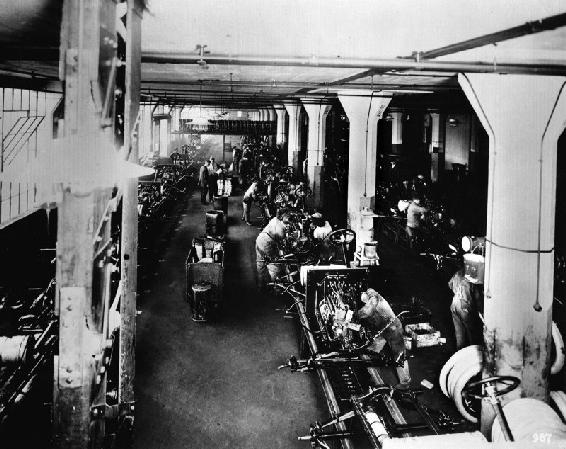
Source: Ford Motor Company, (2018). Company Timeline – Ford.Com. Detroit, Michigan: Ford Motor Company
Mass production of the automobile created substantial problems for the government. How could a safe and effective system of roadways and rules be developed without impeding the evolution of automobiles?
This was the challenge of the day and in the first two decades of the 1900’s large cities struggled to design infrastructure and regulate motor vehicle operation to stem the tide of mass carnage. Traffic fatalities increased by 3,000 percent between 1901 and 1923.
In fact, many cities were so devastated by the substantial number of children and adults killed, they erected monuments to the fallen (Norton, 2008). Figure 2-3
Figure 2-3 (National Safety News 1922)
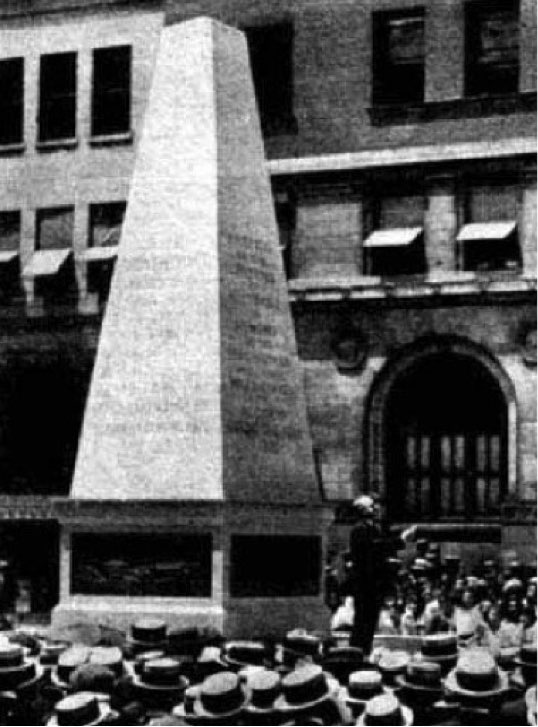
Source: Ford Motor Company (2018). Company Timeline – Ford.Com. Detroit, Michigan: Ford Motor Company.
Unlike the introduction of the railroads in in the 1800’s, automobiles presented a greater challenge. Trains and trolleys were limited to travelling on rails, which made the design of infrastructure and regulation of operation less challenging[1] By 1920 it was clear that affordable automobiles were the conveyance of the future. People were migrating away from the mass transit staples of trains, busses and trolleys, and opting instead for personalized on-demand, motorized transportation.
The concept of regulating innovative technology requires a deep understanding as well as recognition of how overzealous regulation can stifle innovation. There is a delicate balance that must be struck depending upon circumstances. Imposing too much regulation can chill innovation, yet too little can lead to harm. For example, a regulator may define “success” as avoidance of a catastrophe. This is known as the “precautionary principle” of regulation, while an entrepreneur would likely view it as the least favorable outcome of regulation and one that makes it very difficult to innovate (Fenwick, 2017).
Regulation of the Automobile
As early as 1906 it was clear that the evolution from horse drawn carts to automobiles required rules to protect the public and create an ordered traffic system. In 1906 Xenophon Huddy, a New York lawyer wrote the first known law legal treatise on regulation of the automobile. Huddy wrote of the need to embrace the modern technology, but also warned that rules of manufacture, operation, vehicle safety and ownership would be needed to protect the public. (Huddy, 1906)
The first codified embodiment of automobile and driving laws were adopted by New York City in 1906. They were called the “Rules for Driving,” drafted by aristocrat William Phelps Eno and started to regulate operation on automobiles by focusing on speed, turns, and yielding to pedestrians and emergency vehicles. Eno viewed these rules to, “substitute order for where chaos now reigns almost supreme” and believed the most logical way to enforce these rules was through the already existing police agencies (Norton, 2008).
Slowly nations, states, and local governments began to adopt their own laws and regulations, as well as design and safety principles for the creation and expansion of the highway network. By the 1920s most cities and states had enacted regulations sufficient to ameliorate the carnage of 1900-1915.
Figure 2-4 Flights Everywhere
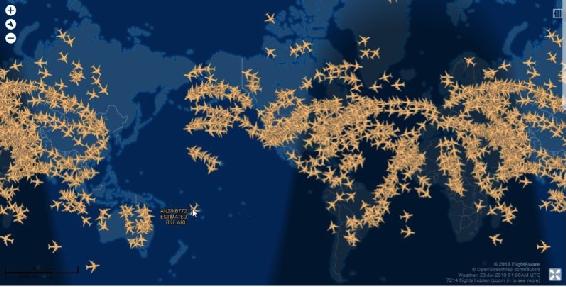
Source: Kekatos, M. DailyMail.com (September 09,2018) Flightaware. The great getaway begins: 6.4 million travelers set off for the holidays as incredible flight tracker map shows how busy the skies are above the US. https://www.dailymail.co.uk/news/article-5207639/Flight-tracker-map-shows-6-4-million-traveling-plane.html
The Next Transportation Challenge – Aviation
Commercial aviation followed closely on the heels of automobiles in the first two decades of the Twentieth Century (Figure 2-4)
The National Advisory Committee on Aeronautics (NACA) was created by Congress and the bill signed by President Woodrow Wilson. The NACA created rules to establish order and safety in aviation (Marshall, 2012)
Figure 2-5 Jet Setting
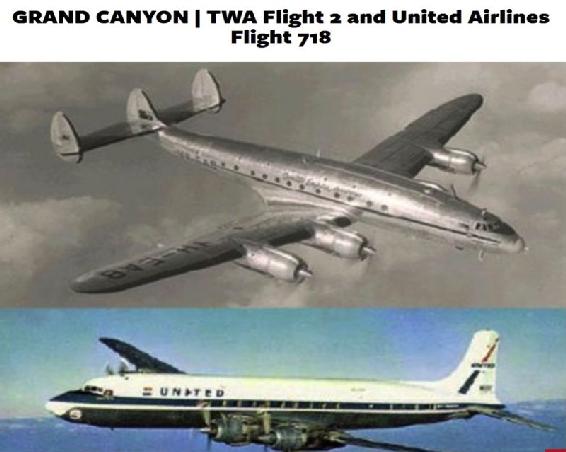
Source: Noland, D & Peterson, B. (August 4, 2017) Popular Mechanics. 12 Plane Crashes That Changed Aviation: Out of these tragedies arose major technological advances in flight safety that keep air travel routine today. https://www.popularmechanics.com/flight/g73/12-airplane-crashes-that-changed-aviation/
The advent of jet propulsion made trans-continental and trans-oceanic passenger travel a reality. The age of “jet setting,” as it was known in the 1960’s, led to a massive increase in air traffic, (Figure 2-5) which in turn heightened the need for regulations and oversight. Due in part to a tragic midair collision in the Grand Canyon, 1958 President Dwight Eisenhower signed legislation establishing what is still known today as the Federal Aviation Administration (FAA).
Concurrently, other nations were also enacting aviation regulations to maintain order and safety in the skies. Rules for safe air transit of passengers and cargo had to be balanced with increasing crowding, from simultaneous increases of military and private aviation. Great Britain enacted the Aerial Navigation Act of 1911, with oversight vested in the Board of Trade. However, with the outbreak of World War I in 1913, that responsibility was transferred to the Secretary of State for War. After the Armistice ending WWI the Department of Civil Aviation was created (Chaplain, 2011).
Since aviation provided the ability to travel great distances rapidly, with few physical restrictions or borders, the next logical step was global aviation regulation and air traffic control. The treaty of Versailles in 1919 addressed the issue by creating the Convention for the Regulation of Aerial Navigation, establishing global standards and rules for aviation over and between nations. The convention specifically provided, “every aircraft of a contracting State has the right to cross the air space of another State without landing. In this case it shall follow the route fixed by the State over which the flight takes place. However. For reasons of general security, it will be obliged to land if ordered to do so by means of the signals provided” (Treaty of Versailles, 1919).
The Convention was the first attempt to balance competing interests related to global navigation, the need for free airspace transit over a nation, to assist commercial aviation develop, with increased risk of attack by a non-military aircraft.
Even though World War II erupted less than two decades later, the need for civil aviation uniformity, predictability, and safety was still paramount in the minds of many. In to achieve this goal, near the end of WWI a convention was held in Chicago called the International Civil Aviation Conference, which resulted in the creation of the International Civil Aviation Organization (ICAO), with fifty-two nations being initial members. The ICAO promulgated rules that apply to global civil aviation in international airspace defined as, “more than 12 miles from the sovereign territory of a country as well as some domestic airspace by virtue of incorporation into a contracting state own regulatory scheme” (Franzese, 2009).
Though each member nation established its own aviation regulatory body and laws, the provisions of the ICAO were meant to create an acceptable level of uniformity and airspace access, while permitting the growth of commercial air travel. But, aircraft and crews from distant regions had to be able to effectively operate and communicate with air traffic control across the globe. Additionally, global aircraft registration, pilot licensing, and safety still needed to be developed.
The first and most pressing issue relating to civil aviation globally was to develop a uniform language requirement so that aircrews could communicate effectively with air traffic and ground controllers no matter their native language. Without language standards, neither pilots nor air traffic controllers who did not speak the same language would be able to communicate. The lack of a uniformity in aviation communication, coupled with the exponential growth in civilian air travel, would result in greater risk of collisions, crashes, and other tragedies. Recognizing this issue, the ICAO in1951 adopted an international requirement that air traffic controllers and air crew must communicate in English to reduce the risk of incidents caused by an inability to understand each other (MacKenzie, 2010).
With thousands of aircraft airborne at any given time, the chance of collisions is a constant, especially in congested skies over major metropolitan areas. Couple that with time of day, weather, terrain, and the risk of mid-air, or even ground collisions, increases exponentially. Unfortunately, simply requiring air traffic controllers and air crew to speak English proved insufficient, as it became clear that language proficiency would also be required. In 1977 it is believed that the lack of language proficiency was a primary cause of the largest loss of life in aviation history. Two 747 aircraft crashed on the runway in Tenerife, Canary Islands, Spain, resulting in 583 fatalities. (Figure 2-6)
Figure 2-6 Two 747 aircraft crashed on the runway
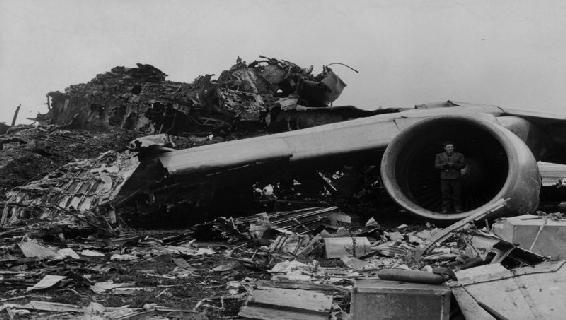
Source: Smith, P. (March 27, 2017) Daily Telegraph. The true story behind the deadliest air disaster of all time. https://www.telegraph.co.uk/travel/comment/tenerife-airport-disaster/
Aviation Design and Manufacture Standards
Aviation safety must extend beyond the flight crew and ground control operations. The design and manufacturing of aircraft also need regulatory oversight. As part of its mission the FAA was empowered by Congress to establish standards for the design and manufacture of commercial aircraft. For a commercial aircraft to enter service in the US, regardless of its origin, the design and manufacture must receive prior approval from the FAA. Currently there is a five-step process to receive approval from the FAA, starting with the original design of the aircraft, leading all the way through to the issuance of an airworthiness certificate, to allow it to commence passenger service (Federal Aviation Administration, 2009).
Development, design, and manufacture standards are a complex process which requires a great deal of collaboration between the FAA, and stakeholders, other nations, the ICAO, and advisory organizations. Three of the most prominent advisory organizations include the Radio Technical Commission for Aeronautics (RCTA) the Society of Automotive Engineers (SAE) and the American Society of Testing and Materials (ASTM) (Marshall, 2012).
Aircraft design and manufacturing standards are developed and regulated to guide the aircraft manufacturers in building aircraft within or operating foreign manufactured aircraft within the airspace of a country. Many nations have, by agreement, adopted the same or very similar commercial aviation design and manufacturing standards to allow uniform standards compliance. For example, an aircraft manufactured by Boeing in its North Charleston, South Carolina plant, is inspected for compliance by the FAA. Due to international uniformity in standards enforced by the FAA, they can certify compliance to the aviation authorities of other countries (Federal Aviation Administration, 2016). (Figure 2-7)
Not only do design and manufacturing standards require compliance, they are also monitored by the government authority throughout the manufacturing and flight testing process. Most, if not all, western aircraft manufacturing facilities are manned by FAA officials or other authorities, to ensure compliance with applicable standards.
Some of the areas in which design and manufacturing standards are established and enforced are through collaboration between Original Equipment Manufacturers (OEM’s) and the various stakeholders previously discussed.
- Aircraft design, structures, avionics.
- Electrical and mechanical systems.
- Power plants.
- Equipment.
- Engineering flight testing (Government of Canada, 2017).
Figure 2-7 Boeing Company

Source: Polek, G. (May 14, 2010) Boeing Halts Delivery of 787 Dreamliner Parts. https://www.ainonline.com/aviation-news/air-transport/2010-05-14/boeing-halts-delivery-787-dreamliner-parts
Regulation is not only vital to safety in the design and manufacture of commercial aircraft, it may be most important when it comes to oversight of commercial air carriers. Day to day operation, crew training, aircraft maintenance and overall operation safety are key components to safety and reliable operation. The FAA has adopted what is known as the Safety Assurance System (SAS) to better manage the certification and operation surveillance or air carriers.
The objectives of the SAS is defined as:
- Verify an applicant can operate safety (sic) and comply with regulations and standards before issuing a certificate and approving or accepting programs.
- Conduct periodic reviews to verify that a certificate holder continues to meet regulatory requirements when the environment changes, and
- Validate the performance of a certificate holder’s approved and accepted programs for Continued Operational Safety (COS) (Federal Aviation Administration, 2018).
While all the regulatory considerations discussed are vital, it should not be assumed that the regulators themselves do not require oversight. Towards this end the US Department of Transportation, under whose aegis the FAA operates, has established an Office of Inspector General, created by the Inspector General Act of 1978.
The Inspector General of each agency of the executive branch of the US government is charged with the duties of protecting the interests of the public and taxpayers. They are supposed to be non-partisan ombudsmen who detect waste, fraud, and abuse in their respective agency. The Inspector General is the watchdog of the watchdog (Brian, 2010).
The importance of the function of the Inspector General cannot be overstated. For example, in 2017 the FAA Inspector General issued a report of its investigation into Edward Carl Hernandez, an FAA Designated Airworthiness Representative, charged with aircraft parts fraud. Hernandez pled guilty to falsifying his certification of airworthiness of a hydraulic adapter fitting that he had never accessed or inspected (Federal Aviation Administration, 2018). Other more widespread abuses have been uncovered through whistleblowers who report irregularities and illegalities in the aviation industry. One such instance, which was particularly troubling, was the claim that Boeing was installing defectively manufactured airframe parts on 737 aircraft where it was also alleged that FAA inspectors conducted a less than thorough review and investigation of the claims. This exact reason is why an independent overseer is needed to prevent too cozy a relationship between the regulators and the regulated (Graves, 2006).
The Inspector General plays an integral role in maintaining transparency and trust in the FAA, through oversight and regulation of UAS. In 2012 the FAA Inspector General commenced an audit of the FAA’s oversight of domestic UAS operation, citing its belief that over 10,000 active systems would be in operation by 2017 (Guzzetti, 2012). Keep this important function in mind in the discussion of UAS regulation and the stresses their popularity will place upon regulators.
Regulated Activity Coexisting with Unregulated Activity
There was no formal regulation of airspace in 1903 when the Wright Brothers first flew their aircraft in Kitty Hawk, North Carolina. Just as was the case with the introduction mass production of automobile, the number of aircraft and air traffic increased rapidly. As discussed earlier the beginnings of air regulation were related to the advent of the air mail operations. It was clear early on regulation would greatly enhance safety. Between 1922 and 1925 the fatality rate for the air mail service was one per 789,000 miles flown while the rate for fledgling, non-regulated commercial fliers was one per 13,500 miles flown (Messier, 2016).[2]
The Aeronautics Branch of the Department of Commerce began to establish pilot licensing and training as well aircraft design and manufacturing safety certification, which led to safer aviation. Regulation and oversight still needed to balance safety with commercial viability. From the Wright Brothers to Charles Lindbergh to Amelia Earhart the rich tradition of private aviation remains. Consequently, aviation regulation had to be able to accommodate less regulated private aviation operating within increasingly crowded skies, simultaneously with increased commercial and military aviation.
A tragic example of the danger occurred in September 1978, when Pacific Southwest Airlines Flight 182, a Boeing 727 collided with a private Cessna 172 over San Diego, California. The accident resulted in the death of 144 people including nine people on the ground. Figure 2-8. The investigation pointed to many failures, not the least of which were air traffic control procedures relating to minimum safe separation between aircraft and the complexity of the interface between private commercial aircraft (National Transportation Safety Board, 1979).
Regulating Unmanned Aerial Systems – Smaller Aircraft Larger Problems
In January 1982, the FAA introduced National Airspace System (NAS) Plan to help enhance aviation safety domestically and to comply with aircraft classification systems created by the ICAO.
Figure 2-8 Tragedy in Pacific South West, 1978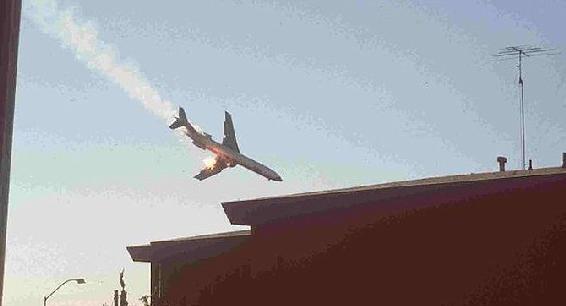
Source: National Transportation Safety Board (1979). Aircraft Accident Report – Pacific Southwest Airlines Flight, 182. Washington, DC: National Transportation Safety Board.
Broadly speaking there are five general classes of controlled airspace in the NAS as defined by the FAA they are (See Figure 2-9):
1. “Class A Airspace – Generally that airspace from 18,000 feet MSL up to and including FL 600, including the airspace within twelve nautical miles of any coast of the forty-eight contiguous States and Alaska, and designated international airspace beyond twelve nautical miles of the coast of the forty-eight contiguous States and Alaska, within areas of domestic radio navigational signal or ATC radar coverage, and within which domestic procedures are applied.
Unless otherwise authorized, all persons must operate their aircraft under Instrument Flight Rules (IFR).” (FFA-PH, 2018)
2. “Class B Airspace – Generally, that airspace from the surface to 10,000 feet MSL surrounding the nation’s busiest airports in terms of IFR operations or passenger enplanements. The configuration of each Class B airspace area is customized and consists of a surface area and two or more layers (some Class B airspace areas resemble upside-down wedding cakes) and is designed to contain all published instrument procedures once an aircraft enters the airspace.
An ATC clearance is required for all aircraft to operate in Class B Airspace, and all aircraft that so cleared receive separation services within the airspace. The cloud clearance requirement for VFR operations is “clear of clouds”. Arriving or transiting aircraft must obtain an ATC clearance prior to entering Class B airspace on the appropriate frequency and relation to geographical fixes shown on local Class B aeronautical charts. Departing aircraft require a clearance to depart Class B airspace and should advise clearance delivery of their intended altitude and route of flight.
Unless otherwise authorized by ATC, aircraft must be equipped with an operable two-way radio capable of communicating with ATC on appropriate frequencies for that Class B airspace. Also, unless otherwise authorized by ATC, the aircraft must be equipped with an operable radar beacon transponder with automatic altitude reporting equipment.
There are currently twelve airports with Class B airspace where the pilot must hold at least a private pilot certificate to take off and land. At other Class B airports, a student pilot or recreational pilot who seeks certification may take off and land if certain requirements are met. The student or recreational pilot must receive ground and flight instruction from an authorized instructor and receive an endorsement from that instructor stating the student or recreational pilot is proficient to conduct solo operations at the specific Class B airport & airspace.
Mode C Veil A Mode C transponder with altitude reporting is required within thirty nautical miles of a Class B airport from the surface to 10,000 feet MSL. An aircraft that was not originally certificated with engine driven electrical system or which has not subsequently been certified with a system installed may conduct operations within a Mode C veil provide the aircraft remains outside Class A, B, or C airspace, and below the altitude of the ceiling of a Class B or Class C airspace area designated for an airport or 10,000 feet MSL, whichever is lower.” (FFA-PH, 2018)
3. “Class C Airspace – Class C Airspace is generally defined as from the surface to 4,000 feet above the airport elevation (charted in MSL) surrounding those airports that have an operational control tower, are serviced by a radar approach control, and have a certain number of IFR operations or passenger enplanements. Although the configuration of each Class C airspace area is individually tailored, the airspace usually consists of a 5 NM radius core surface area that extends from the surface up to 4,000 feet above the airport elevation, and a ten NM radius shelf area that extends no lower than 1,200 feet up to 4,000 feet above airport elevation.
No specific pilot certification is required to operate in Class C airspace. A two-way radio and unless otherwise authorized by ATC an operable radar beacon transponder with automatic altitude reporting equipment is required.
Two-way radio communication must be established with the ATC facility prior to entry and thereafter maintain those communications while in Class C airspace. Pilots of arriving aircraft should contact the Class C airspace ATC facility on the publicized frequency and give their position, altitude, radar beacon code destination, and request Class C service.
Radio contact should be initiated far enough in advance from the Class C airspace boundary to preclude entering Class C airspace prior to establishing two-way radio communications. If the controller responds to a radio call with, “aircraft call sign, standby” radio communications have been established and the pilot can enter the Class C airspace.
If conditions prevent immediate provision of Class C services, the controller will inform the pilot to remain outside the Class C airspace until conditions permit the services to be provided.
It is important to understand that if the controller responds to the initial radio call without using the aircraft call, radio communications have not been established and the pilot may not enter the Class C airspace.” (FFA-PH, 2018)
4. “Class D Airspace – is generally that airspace from the surface to 2,500 above the airport elevation (charted in MSL) surrounding those airports that have an operational control tower. The configuration of each Class D airspace area is tailored and when instrument procedures are published, the airspace will normally be designated to contain the procedures.
No specific pilot certification is required. Unless otherwise authorized by ATC, an operable two-way radio is required.
Two-way radio communication must be established and maintained with the ATC facility providing ATC services prior to entry while in Class D airspace. Pilots of arriving aircraft should contact the control tower on the publicized frequency, giving their position, altitude, destination, and any request(s). Radio contact should be initiated and established far enough in advance to preclude entering the Class D airspace boundary without it.
If the controller responds to a radio call with, “aircraft call sign, standby,” radio communications have been established and the pilot can enter the Class D airspace. If conditions prevent immediate entry into Class D airspace, the controller will inform the pilot to remain outside the Class D airspace until conditions permit entry.” (FFA-PH, 2018)
5. “Class E Airspace – Generally, if the airspace is not Class A, B, C, or D, and is controlled airspace it is Class E airspace. There are no specific pilot certification or equipment requirements to operate in Class E airspace. Special VFR operations are permitted, but clearance must be obtained from the controlling facility.” (FFA-PH, 2018)
6. “Class G Airspace – is the portion of the airspace that has not been designated as Class A, B, C, D, or E. It is therefore designated uncontrolled airspace. Class G airspace extends from the surface to the base of the overlying Class E airspace.” (Federal Aviation Administration, 2016). (FFA-PH, 2018)
Routine access by UAS to the NAS is highly favored by the many stakeholders who design, manufacture and operate. Estimates of 200,000 hours of domestic UAS operation in 2012 were projected to increase well beyond one million hours by 2020 UAS (Marshall, 2012).
UAS will need to be capable of interacting with ATC systems and commands to operate at all levels of airspace simultaneously with manned aircraft. (Marshall, 2012)
Figure 2-9 FAA Airspace Classification
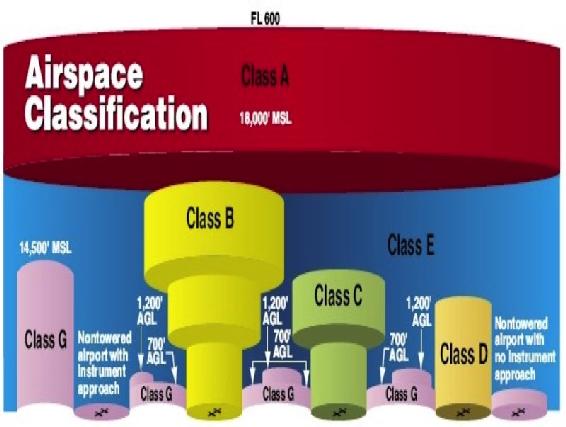
Source: Federal Aviation Administration. (2016). Classes of Airspace. Washington DC: United States Department of Transportation. Retrieved from Types of Controlled Airspace: https://www.faasafety.gov/gslac/ALC/course_content.aspx?cID=42&sID=505&preview=true
For example, long endurance high altitude UAS are currently capable of operating in all classes of airspace up, and including Class A. Having UAV’s travelling at speed approaching the speed of sound in the same airspace as commercial and military jetliners presents numerous safety concerns. Imagine a Global Hawk UAV operating in Class A airspace losing ability to communicate with its ground station and pilot. The risk of collision with commercial aircraft presents a challenge to regulators which, if not successfully addressed, could lead to catastrophic consequences. Alternatively, a civilian operator of a small UAV in Class G Airspace without mandated ATC communication presents far less, but still import risk, to the safety of the NAS.
Regulating UAS Operation in the NAS
UAS operations present a different challenge, since there may or may not be a ground-based pilot operating the vehicle at any point in the flight. Even with ground-based control there is no pilot onboard to report, communicate, and execute commands. The easiest and safest way to regulate UAS operation in NAS would be to ban the practice. Although effective, it is not a practical solution, since it would stifle technology and allow other UAS “friendly” nations an economic and military advantage.
Since the Department of Defense (DoD) was the primary operator of UAS in the NAS in the late 20th century its collaboration with the FAA in the development of approval criteria for Certificates of Authorization (COA) was logical. As the FAA was established to oversee the operation of manned aircraft in controlled airspace the advent of UAS presented new challenges. First and foremost, the ATC system relies upon communication between air crew and ground controllers. As technology such as radar, anti-collision, and ground proximity warning systems were introduced, the safety and reliability of aviation increased. Much of the innovation was designed at increasing pilot and controller information and communication.
The result was the issuance of FAA and DoD joint order 7610.4, special military operations in 2001. Once issued pursuant to FAA Order 7210.3, the COA or waiver would permit an operator of a UAV in the NAS outside restricted or warning areas (Marshall, 2012).
For the DoD to receive a COA or waiver for UAS operation in NAS it had to supply the following data and information:
- Detailed description of the intended flight operation, including the classification of airspace to be used,
- UAS physical characteristics (configuration, length, wingspan, gross weight, means of propulsion, fuel capacity, color, lighting, etc.),
- Flight performance characteristics (top speed, cruise speed, maximum altitude, rate of climb, range/endurance, means of recovery etc.),
- Method of pilotage and proposed method to avoid other traffic,
- Coordination procedures,
- Communication procedures,
- Route and altitude procedures,
- Lost link/ mission abort procedures, and
- A statement by DoD proponent that the unmanned aircraft is airworthy.
The issuance of a COA or waiver was an effective way of ensuring ATC and other aviation operators had prior notice of the nature and extent of a UAS operations in the NAS a system had to be created to effectively apply and disseminate COA’s or waivers once approved.
Under the provisions of joint order 7610.4 the FAA, in conjunction with the military, were able to study the safety, reliability and efficacy of operating UAS in the National Airspace System, so that by 2005 the FAA issued Interim Operational Approval Guidance for UAS entitled AFS 400 (Federal Aviation Administration, 2005).
Civilian UAS Operations – Striking Legislative Balance
While FAA recognized the development of civilian UAS in the NAS, it still required civilian operators to follow the existing airworthiness certification process. In 2006 it took the additional step of creating the Unmanned Aircraft Program Office (UAPO) in 2006.
In 2007 the UAPO created an online COA application for public operators; police, fire, meteorological, etc. The old process was manual. The system is automated, thereby allowing swifter approval. Networked transmission of COA issuance to required stakeholders to further study UAS operations.
Figure 2-10 Sample COA
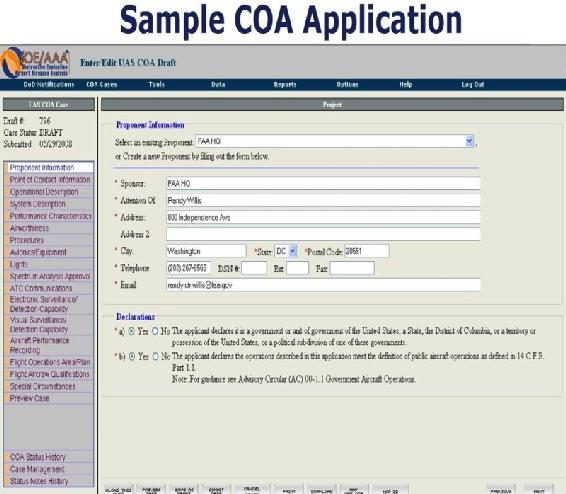
Source: Federal Aviation Administration. (2016, July 6). Aircraft Certification – Bilateral Agreements. Retrieved from Federal Aviation Administration. https://www.faa.gov/aircraft/air_cert/international/bilateral_agreements/
In 2007 the UAPO created an online COA application for public operators; police, fire, meteorological, etc. The old process was manual. The system is automated, thereby allowing swifter approval. Networked transmission of COA issuance to required stakeholders to further study UAS operations.
With increased reports of near-misses between UAV’s and commercial aviation as the size, speed and number of UAV’s increases in the NAS, so does the likelihood of a catastrophic accident. Since such an occurrence could be devastating; caution must be emphasized when regulating their expanded presence in all classes of airspace. Figure 9 details the damage potential even when a small UAV collides with a commercial jetliner. In this situation, a LAM Mozambique on January 5th, 2017 flight TM 1715, a Boeing 737 with eighty-six passengers and crew onboard was approaching Tete airport in northwestern Mozambique. Crew members and passenger reported a “bang” that was believed to be a bird strike. Upon examination after the aircraft had landed, the authorities inspected the damage and determined that the jet had collided with a drone, as there was no organic residue present at or near the damaged. Figure 2-11.
Although disaster was averted this incident calls needed attention to the risk of cohabitated airspace. This risk is heightened with a small UAV with a small radar signature. From the perspective of a regulatory body the natural inclination is to heavily regulate private UAV operation, possibly to the extent of retarding development. Perhaps regulating body should consider a balanced and proportional legislative response to risk.
UAS and Constitutional Rights
Some believe that when seeking legislative balance, given the risk for catastrophic consequences, should tip in favor of more comprehensive regulation. Some believe that civilian operation of UAS at altitudes under 200 feet is best left to the state or local government where the flight is taking place.
Figure 2-11 Drone Crash into Commercial Airline

Source: Cuskelly, C. (January 6, 2017) UK Express. Drone CRASHES into Boeing 737 passenger jet coming into land. http://www.express.co.uk/travel/articles/751165/drone-boeing-737-planecrash-Mozambique. Also See: https://youtu.be/2jzx8BpDuHE
Representative Jason Hill introduced the Drone Innovation Act (H.R. 2930) in 2017, which provides for new a new designation of “local airspace,” defined as under 200 feet in altitude.
Some of the highlights of Drone Innovation Act include:
- Standardize reasonable time, manner, and place limitations and restrictions across the nation.
- Aid states in adopting Unmanned Traffic Management (UTM) and making limitations publicly available to all users.
- Create an environment that is friendly to innovation and fosters rapid integration of UAS.
- Prevents the FAA from authorizing the operation of an unmanned aircraft in local airspace above a property without permission of the owner.
- Preserves State and Federal statutes and common law rights
- Restricts the Secretary from impeding State and local government authority to define local property rights as they apply to UAS
- Ensures UAS can reach navigable airspace.
- Provides for the use of UAS on your property or right of way (Drone Innovation Act , 2017)
HR 2930 addresses several constitutional principles ordinarily not associated with UAS manufacturing, operation, regulation, and responsibility. First and foremost are provisions of the U.S. Constitution and Bill of Rights. How does a document ratified in 1789 apply to UAS legislation and regulation? Here is an example:
Scenario 1: Farmer 1 in Iowa wants to use a UAV to inspect his crops for infestation, hydration, and monitor growth. Neighboring farmers use bi-planes to spray insect repellant on their crops. Suppose that FAA regulations prohibit a private citizen from operating an UAS within 500 feet of another property where commercial or private fixed wing aviation occurs more than once every thirty days? See: Figure 2-12 and Figure 2-13
The Fifth Amendment of US Constitution provides in the portion applicable to this scenario that “No person shall…nor be deprived of life, liberty, or property, without due process of law; nor shall private property be taken for public use, without just compensation.” (United States of America, 1791).
The Fourteenth Amendment specifically applies the protections of the Fifth Amendment through what is known as the “equal protection clause” which extends these protections to citizens of individual states.
Figure 2-12 Scenario 1 Part 1
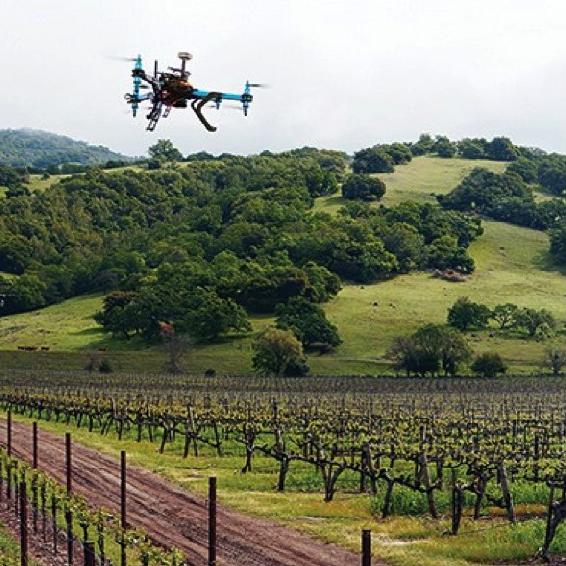
Source: Anderson, C. (December 24, 2015) MIT Technology Review. Agricultural Drones: Relatively cheap drones with advanced sensors and imaging capabilities are giving farmers new ways to increase yields and reduce crop damage. https://www.technologyreview.com/s/526491/agricultural-drones/
Some of the issues raised:
- By enacting this regulation has the FAA deprived farmer 1 of the right to maintain their private property as they see fit?
- Does this prohibition deprive farmer 1 of the liberty in that the UAS flight at low levels will be conducted solely upon farmer 1’s property?
- Does Farmer 1 have any ability to appeal this regulation or have it modified so that they can use UAS on their farm thereby depriving them of due process of law?
- Do the protections afforded farmer 2 in prohibiting farmer 1 from UAS operation deprive her of equal protection” under the law? Since it puts farmer 1 at a competitive disadvantage to farmer 2, simply because they each chose to employ different technology?
Figure 2-13 Scenario 1 Part 2

Source: Hammond, K. (October 1997). Crop duster.
- Can farmer 1 bring an action against the FAA? In which court? The Federal Court for the District of Iowa would have jurisdiction (officially conferred power to render decisions and judgment involving the subject of the case) because the claim presents what is known as “federal question” jurisdiction. It could also be brought in an Iowa State Court, since the dispute arises in Iowa where the State Court has concurrent jurisdiction with the Federal Court.
- Should farmer 2 be named as a defendant, since they will be adversely affected should farmer 1 win?
- If the FAA regulation is a violation of the constitutional rights of farmer 1, what is the remedy? Can the court award farmer 1 monetary compensatory damages (an order declaring that the FAA law is either unconstitutional as written or as applied to Farmer 1)? If so, how much?
Now let us address some of the legal implications which can result from the operations of a UAS.
Scenario 2: Homeowner 1 lives at 1814 Todd Road in Manhattan, Kansas. Homeowner 2 lives next door at 1812 Todd Road and has a “no trespassing” sign posted. Homeowner 1 is a customer of Amazon and has signed up for its Prime-air service. (Figure 2-14 Scenario 2)
Figure 2-14 Scenario 2
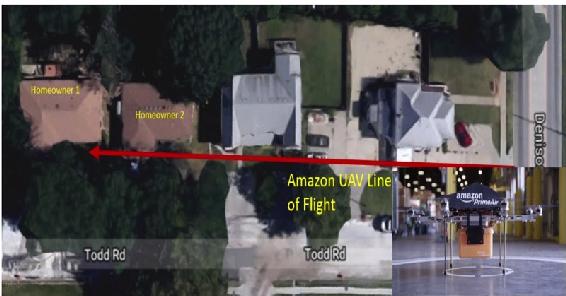
Source: Mumm, H. (May 11, 2018) Author created collage using Google Maps and Amazon partial figure, Scenario 2, partial. https://24tv.ua/amazon_tag1532/
Homeowner 1 orders peanuts from Amazon, with thirty-minute prime-air home delivery. While calculating the UAV route the operator studies ground and aerial images and discovers trees that might inhibit delivery. The pilot creates a course between the trees on Todd Road and the home of Homeowner 1. The UAV travels over the front porch of homeowner 2 (Figure 13).
The Amazon UAV arrives to make the delivery to 1814 Todd Road. Due to an unforeseen software glitch in the GPS when the number 4 appears in an address after the number 1 it treats it as the number 2. The UAV delivers its payload to 1812 Todd Road, the residence of homeowner 2.
Homeowner 2 has a relative looking to relocate, due to a serious and life-threatening allergy to peanuts. This person forgot to pack their Epi-pen, which could prevent them from going into anaphylactic shock from a severe allergic reaction. As fate would have it no one else is home when the UAV delivers its payload. Having never witnessed this modern technology the relative wanders outside and picks up the package. Unfortunately, Amazon package has left peanut residue all over the box.
The relative of homeowner 2 immediately has a serious allergic reaction. Without his Epi-pen, they succumb a blockage of their airway.
Some of the Legal Issues Raised:
- Did the Amazon UAV trespass on the property by landing, albeit unknowingly, violate Kansas Statutes Annotated (KSA) 21-3721, criminal trespass, or commit the tort of trespass?[3][4]
- Was homeowner 1 contributorily negligent in signing up for Amazon prime-air delivery when a reasonable person might foresee the delivery landing at his neighbor’s home, which had a posted no-trespassing sign?
- Did the events which occurred because of the Amazon UAV pilot deciding to travel via the air space of homeowner 2 amount to a violation of the COA or other certification?
- Did the flight through over homeowner 2’s home constitute the crime of criminal trespass as defined in KSA 21-3721?
- Could Amazon argue that it was unaware of the requirements of KSA-3721 when it sells signs on its marketplace specifically advising of the statute? (Figure 14)
- Was Amazon criminally responsible and/or civilly liable for the death of homeowner 2’s relative, since it was reasonably foreseeable that the UAV might mistakenly deliver peanuts, which are widely known to cause serious allergic reactions in many, to the wrong address?
- Do the “Terms of Service” agreed to homeowner 1 and Amazon have any effect against legal or criminal claims brought by homeowner 2, the relative, or the survivors?
Figure 2-15 No Trespassing

Source: Private property sign by Elljay. Licensed under CC0. https://pixabay.com/en/private-property-sign-gate-private-1109273/
- Was Amazon criminally responsible and/or civilly liable for the death of homeowner 2’s relative, since it was reasonably foreseeable that the UAV might mistakenly deliver peanuts, which are widely known to cause serious allergic reactions in many, to the wrong address?
- Do the “Terms of Service” agreed to homeowner 1 and Amazon have any effect against legal or criminal claims brought by homeowner 2, the relative, or the survivors?
- Should the FAA investigate through the National Transportation Safety Board (NTSB)? If violations of laws or customs by Amazon and parties institute proceedings to revoke some or all their COA’s or permits?
Common Law Fills the Technology Gap
Consider the many other legal ramifications and consequences in both scenarios. Is it possible to legislate and foresee every possible contingency or event that may cause harm from the operation of a UAS? Certainly not, so how can a broad range of possible accidents or intentional acts be causing harm to be addressed? Common Law. “Common law is the system of deciding cases that originated in England and which was later adopted in the U.S. Common law is based on precedent (legal principles developed in earlier case law) instead of statutory laws. It is the traditional law of an area or region created by judges when deciding individual disputes or cases. Common law changes over time” (U.S. Legal, Inc., 1997)
The concept of common law is especially useful when dealing with new and rapidly changing technology. Broadly applicable common law theories such as the theory of negligence is a perfect example of how the common law can bridge the gap. Just as in Aesop’s fable of the tortoise and the hare, the concept of common law finds its adaptability to changing times and technology in the slow and steady way it has developed.
While the courtrooms of England of the 1600 & 1700’s were not the place where UAV litigation occurred, cases were being heard regarding safe design, manufacture, and operation of modern technology of the times. For example, common law established the same principles of negligence discussed in scenario 2 above. In the English Court of Common Pleas in the mid-1700’s “common carriers” such as horse drawn coaches and ships were could be held liable under the theory of negligence for injuries caused by their activity. If the claimant could prove the carrier was negligent in their transport they would be held financially responsible for damages sustained (Kaczorowski, 1990). History contains many common themes that should be examined before new legislation is enacted. When it comes to the creation of laws to address modern technology, the adage “everything old is new again” takes on new meaning.
UAS Manufacturing and Design Standards
As discussed in relation automobiles and manned aircraft codes are essential tools in ensuring the UAS produced and operating in the NAS have certain essential technologies and capabilities which render them airworthy and capable of safely co-exist in public airspace. Just as Huddy consulted many stakeholders ranging from automobile engineers, designers and manufacturers to police, accident victims, and medical professionals for his book Rules of Driving, legislators, regulators and jurists should consult informed stakeholders in the UAS regulatory process. Groups ranging from educators to pilots to the ASTM should be the source of determining what areas relating to UAS require regulation.
Regarding design and manufacturing standards, enough time has passed that a large population of individuals and groups can consult with the FAA in their promulgation. For example, an engineer may suggest that what a standard for UAS anti-collision lights adequate to avoid collisions while a regulator may suggest mandating more, such as onboard radar. While onboard radar for all classes of UAS may make sense as a utopian concept, the cost, weight and size of the technology may make engineering an affordable solution out of reach for all but commercial operators. Yes, it would certainly effective but could never justify such a farfetched notion. Such is overzealous caution in the regulation process. Perhaps Larry Downes of the Georgetown Center for Business and Public Policy put it best when he observed:
“That solution — to stay the course, to continue leaving tech largely to its own correctives — is cold comfort to those who believe tomorrow’s problems, coming up fast in the rear-view mirror, are both unprecedented and catastrophic. Yet, so far there’s no evidence supporting shrill predictions of a technology-driven apocalypse. Or that existing safeguards — both market and legal — won’t save us from our worst selves. Nor have tech’s growing list of critics proposed anything more specific than simply calling for “regulation” to save us. Perhaps that’s because effective remedies are incredibly hard to design” (Downes, 2014).
Conclusions
As was the case with the automobile, airplane, personal computer and so much other innovative technology, there will always be much fear caused by speculation and fear of the unknown. Just ten or twenty years ago most people would never dream of, much less trust the idea of doing their banking online, having their doctor keep their medical records electronically or using a mobile phone to unlock the front door to their home. Concepts which were once considered futuristic, science fiction seem to be becoming reality with greater speed than ever. Still it is prudent to proceed with caution in areas of unknown technology because there may be hidden, or unknown risks associated with the adoption or use of the technology on a large scale.
Figure 2-16 Three Mile Island
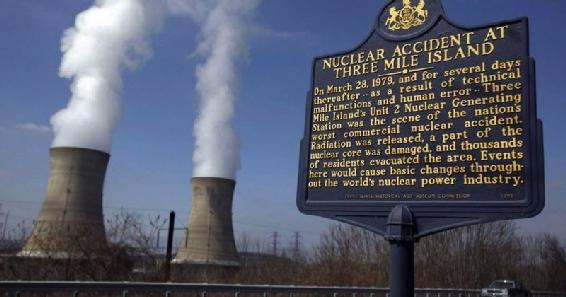
Source: United States Nuclear Regulatory Commission. (2018, June 21). Backgrounder on the Three Mile Island Accident. Retrieved from USNRC: https://www.nrc.gov/reading-rm/doc-collections/factsheets/3mile-isle.html#summary
A perfect example occurred not too many decades ago in Pennsylvania. The Three Mile Island nuclear power plant experienced what was called a “partial meltdown” on March 29, 1979 which caused the release of radiation into the surrounding area. (Figure 2-16) While ultimately the amount of radiation released was considered minimal by the Nuclear Regulatory Commission, a long hard look at nuclear energy was undertaken and new, far more stringent design, manufacturing and operational standards were adopted (United States Nuclear Regulatory Commission, 2018). The result of the regulations were in some ways beneficial and in some way not. As an immediate matter the use and popularity of nuclear power in the United States became significantly diminished. This was also fueled by the more devastating and significant meltdown which occurred in 1986 in the then Soviet Union city of Chernobyl. Eventually nuclear power plants were re-engineered and designed with the lessons learned from these accidents in mind to create a safer way of harnessing nuclear energy to produce electricity.
The same lessons learned through aviation accidents and the tragic loss of life have resulted common sense regulations, based upon knowledge acquired from these painful events which have led to the safest period of commercial passenger aviation in history.
The challenge for the students of today who may be the legislators, regulators and adjudicators of UAS law in the future is to strike a balance between enough regulations to ensure public safety without overregulation. Too little oversight and safety may fall victim to profit and market competition, too much and safety can also be negatively impacted by inhibiting the development of innovative technologies which may enhance the safety of UAS in the future. This paradigm has been a truism throughout the industrial revolution right through today and it is a safe assumption that the future will yield comparable results.
Discussion Questions
1. At what altitude over private property, if any should the owner have right to privacy that allows them to request the UAV depart or be held liable for trespass? Would your answer be different if the UAV were equipped with highly sensitive audio and visual recording technology or wireless data interception technology?
2. Should Federal, State or Local governments mandate that all non-military UAS operators be required to carry liability insurance for damage or injury caused (including invasion of privacy) prior to allowing any UAS to be purchased or operated by any civilian or private entity? If so should the liability insurance requirements vary depending upon the class of UAS and its potential of causing damage or injury?
3. Law enforcement is called by a homeowner who says that a drone crash landed in his backyard, there has been no contact from anyone claiming to own the UAV nor did the homeowner see any anyone in proximity to their property appearing to operate or control it. Further the homeowner says there is a box below the drone which appears to be its payload leaking some sort of bubbling liquid. How should the homeowner be advised? Should law enforcement treat the UAV as an unidentified suspicious package presenting a Hazmat or other safety threat?
4. The local army navy store has a sale on used surplus military equipment. Upon visiting the store, you recognize one of the items as a case of Perdix miniature military drones capable of performing swarm attacks on designated targets. Based upon your knowledge of the technology you understand the lethality of the threat they pose. What if any legal obligation do you have to inform the store owner of the fact the items pose a danger? Suppose the store owner dismisses your concern and says he is going to sell them anyway. Do you have an obligation to report him to the police or other governmental authority? Should you decide not to do so, and the drones are eventually used to attack a school and students are injured or killed. Are you criminally liable? Should there be inventory control and disposal laws which prohibit the sale of surplus UAS technology, even if modified for civilian use, to the public?
Bibliography
Brian, D. (2010, May 4). Inspecting For Trust: The Role Of Inspectors General. (B. Naylor, Interviewer) Retrieved from https://www.npr.org/templates/story/story.php?storyId=126511407
Chaplain, J. (2011). Safety Regulation The First 100 Years. Journal of Aeronautic History.
Downes, L. (2014). How More Regulation for U.S. Tech Could Backfire. Harvard Business Review.
Drone Innovation Act , H.R. 2930 (United States House of Representatives – 115th Congress June 16, 2017).
Federal Aviation Administration. (2005, September 16). Memorandum – AFS 400 UAS Policy 5-01. Unmanned Aerial Systems Operations in the U.S. National Airspace System – Interim Operational Approval Guidance. Washington, DC: Federal Aviation Administration.
Federal Aviation Administration. (2009, August 9). Original Design Approval Process. Retrieved from Federal Aviation Administration: https://www.faa.gov/aircraft/air_cert/design_approvals/orig_des_approv_proc/
Federal Aviation Administration. (2016, July 6). Aircraft Certification – Bilateral Agreements. Retrieved from Federal Aviation Administration: https://www.faa.gov/aircraft/air_cert/international/bilateral_agreements/
Federal Aviation Administration. (2016). Classes Of Airspace. Washington DC: United States Department of Transportation. Retrieved from Types of Controlled Airspace: https://www.faasafety.gov/gslac/ALC/course_content.aspx?cID=42&sID=505&preview=true
Federal Aviation Administration. (2018, March 14). Air Carrier Oversight. Retrieved from https://www.faa.gov/about/initiatives/atos/oversight/
Federal Aviation Administration. (2018, January 25). Former South Florida FAA Designates Airworthiness Representitive Charged With Aircraft Parts Fraud. Retrieved from Investigations: https://www.oig.dot.gov/library-item/36272
Fenwick, M. D. (2017). Regulation Tomorrow: What Happens When Technology Is Faster than the Law. American University Business Law Review, 55.
FFA-PH. (2018, August 26). Faa.gov/regulations_policies/handbooks_manuals/aviation/phak/media/pilot_handbook.pdf. Retrieved from FAA: https://www.faa.gov/regulations_policies/handbooks_manuals/aviation/phak/media/pilot_handbook.pdf
Ford Motor Company. (2018). Company Timeline – Ford.Com. Detroit, Michigan: Ford Motor Comany.
Franzese, L. C. (2009). Sovereignty In Cyberspace: Can It Exist? Air Force Law Review.
Government of Canada. (2017, September 13). Transport Canada. Retrieved from National aircraft Certification: https://www.tc.gc.ca/eng/civilaviation/certification/menu.htm
Graves, F. G. (2006, April 17). Boeing Parts and Rules Bent, Whistle-Blowers Say. the Washington Post.
Guzzetti, J. B. (2012, October 22). Audit Initiated of FAA’s Oversight of Unmanned Aircraft Systems. Retrieved from New Audit Announcements: https://www.oig.dot.gov/library-item/29314
Hammond, K. (1997, October 18). Crop Duster, ID k7803-2. Retrieved from USDA: http://www.ars.usda.gov/is/graphics/photos/oct97/k7803-2.htm
Huddy, X. P. (1906). The Law of Automobiles. Albany, NY: Matthew Bender and Company.
Kaczorowski, R. J. (1990). The Common Law Background of Nineteenth Century Tort Law. Ohio State Law Journal, 1129-1130.
Loomis, B. (2015, April 26). 1900-1930: The years of driving dangerously. The Detroit News.
MacKenzie, D. (2010). ICAO A History of the International Civil Aviation Organization. Toronto: University of Toronto Press.
Marshall, D. M. (2012). Introduction To Unmanned Aircraft Systems . Boca Raton FL: Taylor & Francis.
Messier, D. (2016, March 3). A Closer Look at Early Aviation Safety & Regulation. Retrieved from Parabolic Arc: http://www.parabolicarc.com/2016/03/03/early-aviation-safety/
National Transportation Safety Board. (1979). Aircraft Accident Report – Pacific Southwest Airlines Flight 182. Washington, DC: National Transportation Safety Board.
Norton, P. D. (2008). Fighting Traffic: The Dawn of the Motor Age in the American City. Cambridge, MA: MIT Press.
Schlichting, M. (1993). Aesop’s Fable The Tortoise and the Hare, as retold by Mark Schlicting. Novato, CA: Broderbund Company.
Tennekes, H. (1997). The Simple Science of Flight – From Insects to Jumbo Jets. Cambridge MA: MIT Press.
The Saylor Foundation. (2008). Scientific Management Theory and the Ford Motor Company. Washington, DC: Saylor Academy.
Treaty of Versailles. (1919). Convention Relating to the Regulation of Aerial Navigation . Treaty of Versailles. Paris.
U.S. Legal, Inc. (1997). Common Law And Legal Definition. Retrieved from US Legal: https://definitions.uslegal.com/c/common-law/
United States Nuclear Regulatory Commission. (2018, June 21). Backgrounder on the Three Mile Island Accident. Retrieved from USNRC: https://www.nrc.gov/reading-rm/doc-collections/fact-sheets/3mile-isle.html#summary
United States of America. (1791, December 15). Constitution of the United States. Fifth Amendment . Washington, DC: United States Government.
- This is not to say that the introduction of rail transport in was safe by any means. Pedestrians, other trains, animal drawn carriages and animals themselves were killed in large numbers due to being run over by a train. ↵
- Commercial flight data available for 1924 only. ↵
- A tort is an act or omission that gives rise to injury or harm to another and amounts to a civil wrong for which courts impose liability. ↵
- It is illegal to enter or remain on any land, non-navigable body of water, structure, vehicle, aircraft or watercraft, or nuclear or healthcare facility without the owner or other authorized person’s consent, according to Kansas Statute 21-3721. It’s considered trespassing if there are signs or postings, or if there are fences, locks or other means of enclosed, shut or secured passages of entry. Criminal trespassing in Kansas is a Class B nonperson misdemeanor, which carries a penalty of no less than 48 consecutive hours of imprisonment and up to six months in jail. ↵

